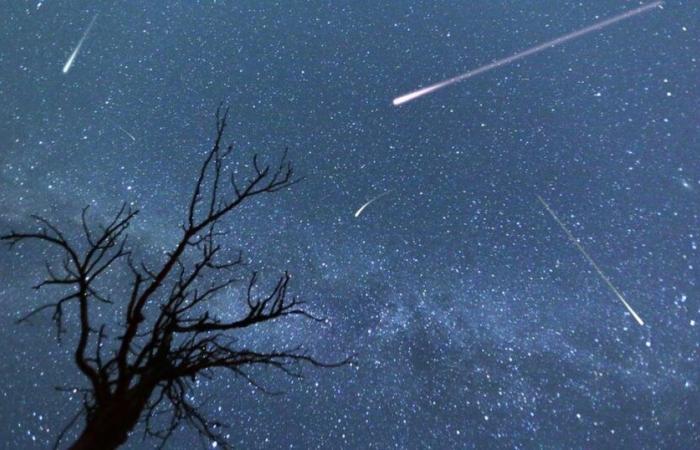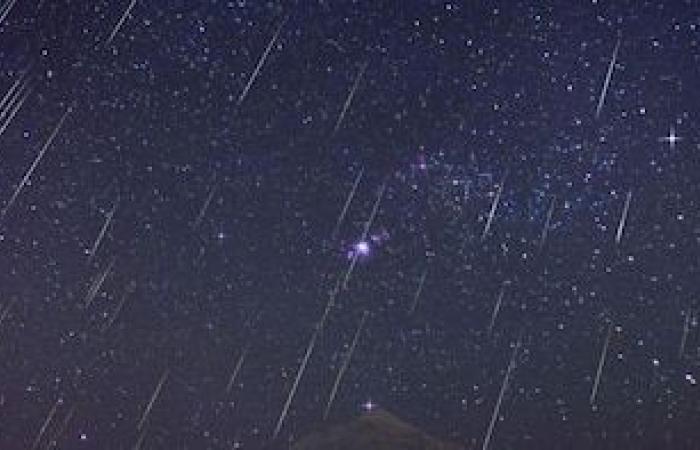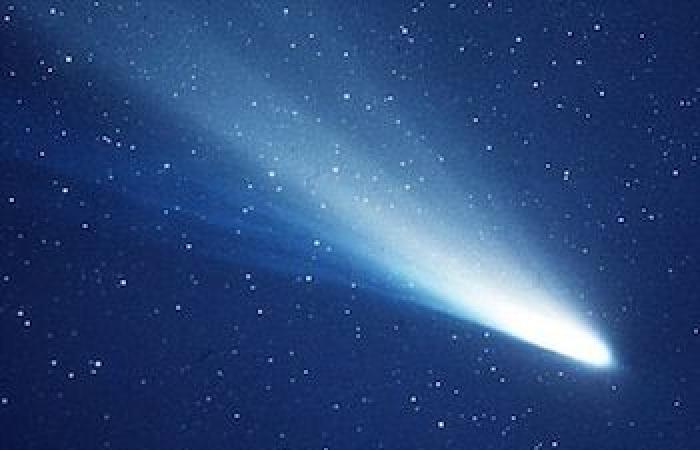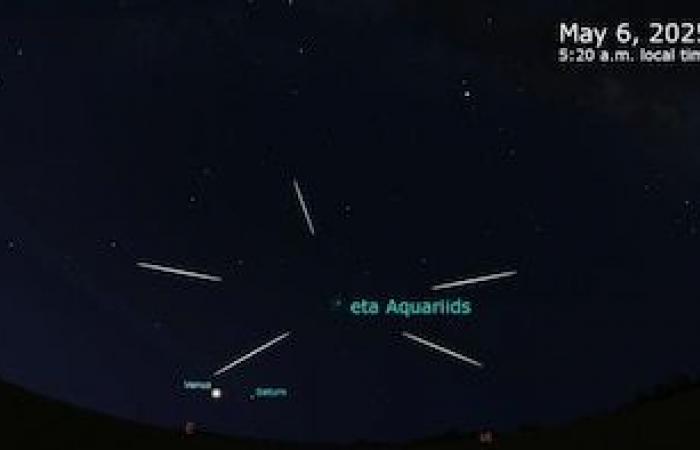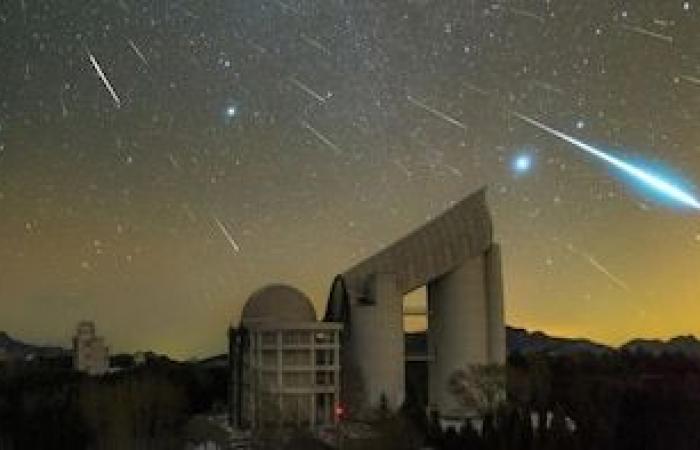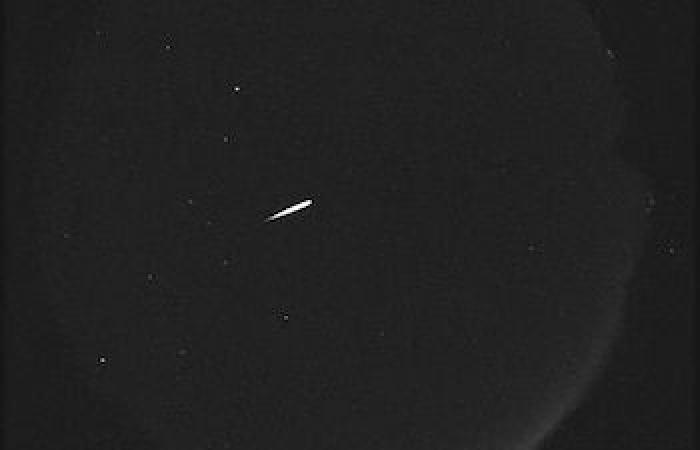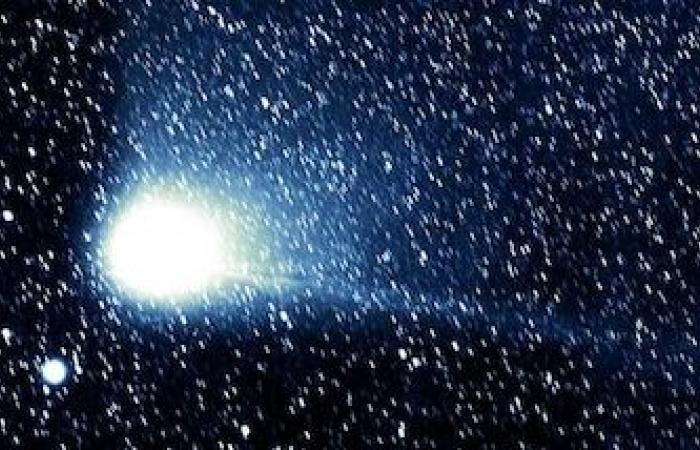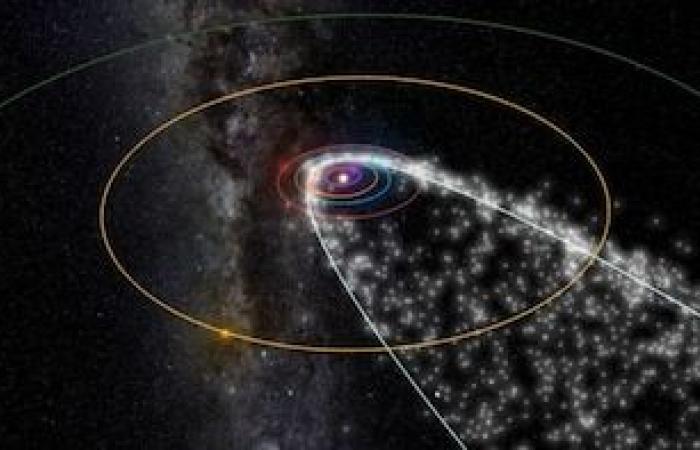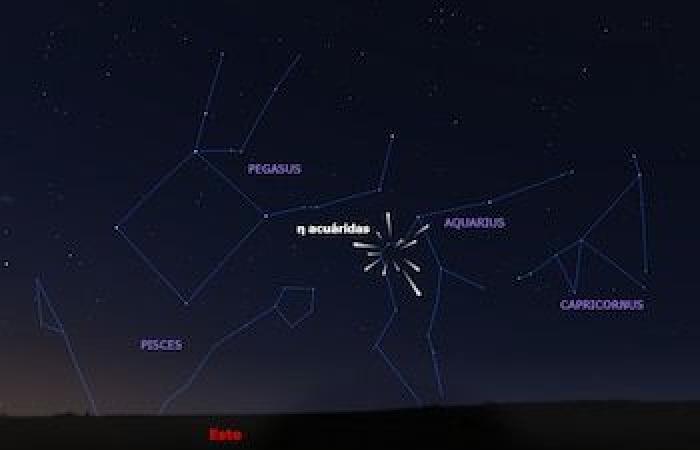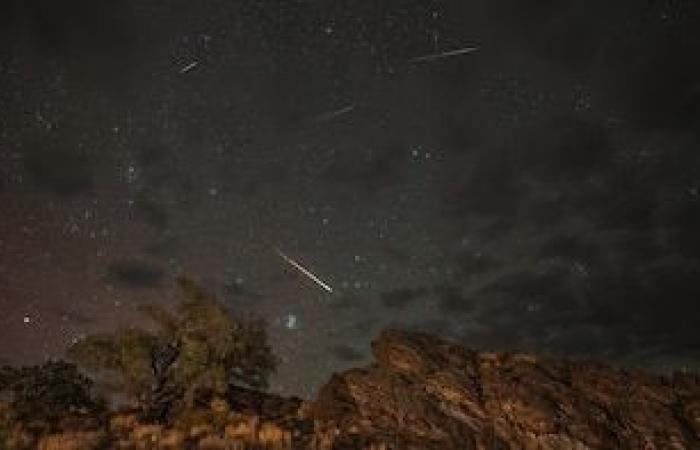Tonight will mark the peak of one of the most anticipated meteor rains of the astronomical calendar. This is the ETA acuáridas, a Meteor current originated by fragments of the famous comet Halley, which is currently thousands of millions of kilometers from the earth, but whose legacy still produces a visible show from different parts of the planet.
This phenomenon is repeated every year between April and May, when the earth crosses the trail of particles left by the kite. Although the event has a wide visibility window that covers from April 19 to May 28, it is in the first days of May when the best observation conditions are reached.
He Comet Halley Complete a solar orbit every 76 years. It was last observed in 1986 and will be visible again in 2061. Meanwhile, its historical passage left in its path a stream of spatial debris that regularly collides with the earth’s atmosphere. This interaction generates light flashes that can be seen with the naked eye From the earth’s surface, in the form of fast meteors that cross the sky at high speed.
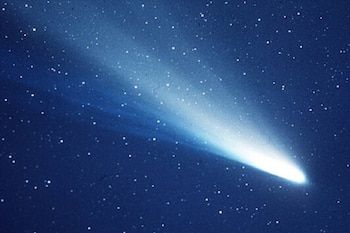
“The Rain of Meteoros ETA Acuáridas occurs when small particles of dust and debris of the comet Halley enter the earth’s atmosphere,” explains NASA.
The US agency indicates that these particles They reach speeds of up to 66 kilometers per second Upon contacting the atmosphere. That clash produces heat due to friction and disintegrates the material, generating visible light from the ground. Some of those meteors leave steles that persist a few more seconds, a phenomenon known as the light train.
The geographical distribution of the event especially favors the southern hemisphere, where the radiant – point of heaven from which the meteors seem to emanate – is high at the top during this time of year. The aquarium constellation becomes the ideal framework to observe the phenomenon in southern latitudes.
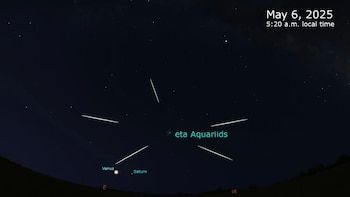
NASA estimates that in optimal conditions of dark sky, there can be up to 50 meteors per hour. Instead, the northern hemisphere will have minor rates, with averages between 10 and 20 meteors per hour. Even so, specialists recommend not losing the opportunity: “NASA estimates that stars observers in the northern hemisphere can still see about 10 meteors per hour in dark sky conditions.”
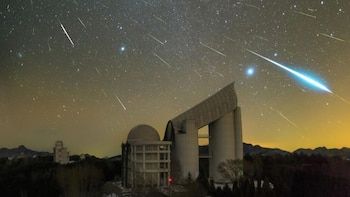
The optimal moment for observation will be shortly before the dawn on Tuesday. In that period, the radiant is close to the star Sadachbia, on the southeast horizon. The recommendation is to look towards a broad region of the sky, without focusing directly on the constellation of Aquarius.
“Never look directly at the radiant. Instead, follow the advice of NASA and lie on your back on something soft with your feet pointing to the east. This will allow you to contemplate a wide strip of the sky, which will give you the best opportunity to see an ETA Acuárida furrowing the sky, ”they recall.
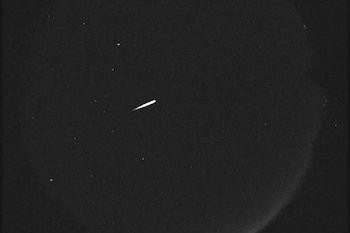
The story of Comet Halley is intertwined with the beginnings of modern astronomy. It was Edmond Halley who successfully predicted his return in 1705, based on the planetary movement laws formulated by Isaac Newton. Since then, the comet has been an object of sustained interest.
In 1986, an international probe mission studied it in detail during its last step through the interior solar system. He is currently on a return trip to the sun, a trajectory that began in December 2023 and will take decades to complete. NASA calculates that it will reach its closest point to Earth in 2061.
The comet was the subject of intense scrutiny by an international fleet of space probes during its last visit to the interior solar system in 1986, after which it disappeared from the earth’s sky to continue its 76 -year -old orbital trajectory, which leads to 5,280 million kilometers from our sun.
-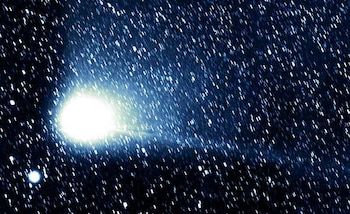
The Halley comet began its 38 -year return trip to our star on December 8, 2023 and it is not expected that Pass up near Earth until 2061, According to NASA.
Although the kite remains beyond visual reach, its presence is manifested annually by means of two meteor rains. The ETA Acuáridas, visible in May, and the Orionaids, which occur in October.
“Astronomy fans will be able to observe their legacy in the annual orionid and ETA acuáridas meteoros rains, during which the remains of the legendary kite collide with our atmosphere to create spectacular fleeting stars,” says NASA.
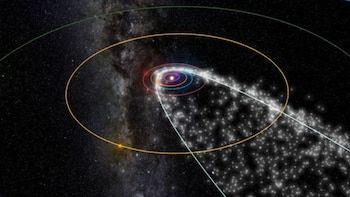
Each of these events occurs when the orbit of the Earth intercepts the remains of the Halley orbital wake. The European Space Agency has documented this pattern and has confirmed it together with the Harvard-Smithsonian astrophysics center.
The data allow anticipating the appearance and behavior of meteor rains with increasing precision.
After the peak of the ETA Acuáridas, the next important event will be the southern Aquáridas Delta Rain, scheduled for the end of July, followed by the Orionides in October.

Observing a meteor rain does not require telescopes or complex equipment. Specialists recommend looking for clear skies, far from light pollution, and allowing the eyes to adapt to darkness for at least 30 minutes.
They also advise wearing warm clothes, since the phenomenon occurs at dawn, and notify someone if a separated place is chosen for observation. “Remember to shelter you well to protect you from the cold from dawn and warn a friend or family where you go if you decide to observe from a remote place with dark sky. ”
Although the night sky may seem constant, the presence of phenomena such as the ETA acuáridas remember that space remains in motion. What shines today on our heads are fragments that left their trail hundreds of years ago, tiny remains that when entering the earth’s atmosphere give rise to one of the oldest and most fascinating shows of astronomy.
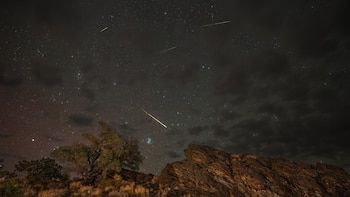
The 2025 edition of this meteor rain will be partially affected by the presence of the moon in the increasing phasewith about two thirds of its illuminated surface. This condition can reduce the visibility of less intense flashes. However, the brightest meteors are still visible to the naked eye.
The opportunity to witness the ETA Acuáridas not only summons astronomy enthusiasts, it also allows us to observe a phenomenon linked to an astronomical history of long breath. Each line of light in the sky is not just a friction -on particle.
It is also a footprint that left a kite on its millenary tour, a proof that the space is still in interaction with the earth. Although Halley will not go through several decades, its presence is updated Every year with these short fires that cross the sky.

